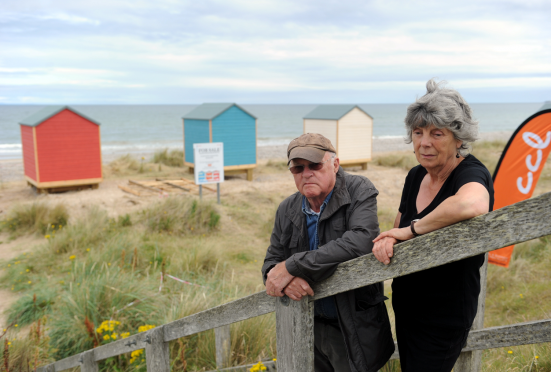The first batch of controversial beach huts on the Moray coast have been built.
Although some of the Findhorn seaside shelters are now in place, they continue to polarise opinion the village.
Beach walkers have praised the look of them – but protestors continue to brand them an “intrusion”.
Interest has already been high in the £25,000 colourful huts with eight sold and “strong enquiries” about the rest.
The battle over the plans ended in January after a Court of Session bid by villagers to block them was dismissed.
Managing director of developer 1 Architects, Ian Sutherland McCook, has heard praise for the huts now they are actually built.
He said: “There have been complimentary comments. We’ve got specialists from Norfolk building them and they’ve been pleased by the general positivity.
“There’s been hardly anybody objecting. That may be because people are still just quietly objecting, they’ve accepted it and moved on or maybe they’ve changed their mind. It’s not for me to say which.”
He added: “We’ve kept them small because they’re not suitable for any kind of short-term occupancy. They are a shelter for the beach.
“Some of the ones at Hopeman are quite large with kitchens and tables and chairs. Ours aren’t big enough for that.”
The plans were finally approved earlier this year following a drawn-out process during which 173 objections were submitted to Moray Council.
Engineers have built 10 huts on the beach so far, with another five due to be put in place in the coming weeks.
The remaining 15 of the planned structures will be built following the tourist season.
Six of the huts have been sold to people within a 20-mile radius of Findhorn, and two more to people with ties to the area.
Findhorn resident Maureen Hyde campaigned against the development and has not changed her mind about the huts.
The protest group still needs to raise £10,000 to cover its failed legal bid to have the project halted.
Mrs Hyde said: “They are an intrusion, there’s no denying that. They are something that don’t need to be there.
“I would say that the feeling in the village is the same as it was before.
“Everybody compares them to the ones at Hopeman, but they are totally different.”
